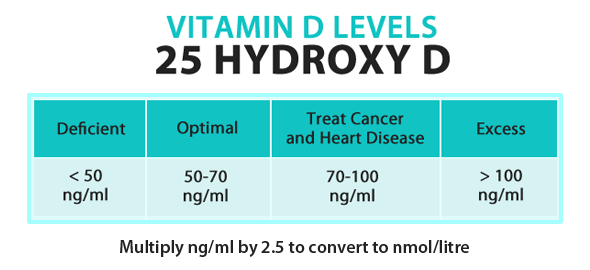By Dr. Mercola
Both artificial sweeteners and certain gut microbes have previously been linked to obesity, and according to the latest research, artificial sweeteners may raise your risk of diabetes by disrupting your intestinal microflora. According to the authors of the widely publicized study:1
"[W]e demonstrate that consumption of commonly used non-caloric artificial sweeteners formulations drives the development of glucose intolerance through induction of compositional and functional alterations to the intestinal microbiota."
The researchers found that artificial sweeteners alter certain metabolic pathways associated with metabolic disease, and that it can induce gut dysbiosis and glucose intolerance in otherwise healthy people.
Glucose intolerance is a condition in which your body loses its ability to cope with high amounts of sugar, and it's a well-known precursor to type 2 diabetes. It also plays a role in obesity, because the excess sugar in your blood ends up being stored in your fat cells.
The fact that artificial sweeteners may exacerbate metabolic disorders like diabetes is a severe blow to diabetics who dutifully follow recommendations to switch to diet foods and beverages in order to control their diabetes.
The fact that artificial sweeteners are NOT a dieter’s nor a diabetic’s best friend has been known by researchers for some time. The problem is that it hasn’t received the necessary traction in the media—until now.2, 3
"Collectively, our results link non-caloric artificial sweeteners (NAS) consumption, dysbiosis and metabolic abnormalities, thereby calling for a reassessment of massive NAS usage," the researchers note.
Artificial Sweeteners Can Cause Glucose Intolerance by Altering Your Microbiome
The researchers initially started out testing the artificial sweeteners saccharin, aspartame, and sucralose in mice, and were "surprised" when the mice developed glucose intolerance.
As noted by New York University microbiologist Martin Blaser,4 no one had previously considered that artificial sweeteners might exacerbate metabolic disease by way of the microbiome.
Of the three non-caloric sweeteners tested, saccharin had the most pronounced effect on glucose levels. This led to a human trial, in which data from 400 people enrolled in a nutritional study were assessed.
Those who consumed high amounts of artificial sweeteners were found to have higher levels of HbA1C—a measure of blood sugar—compared to non-users or occasional users of artificial sweeteners.
Seven volunteers who did not use artificial sweeteners were then recruited, and asked to consume the equivalent of 10-12 single-dose packets of artificial sweeteners daily for one week.
Four of the seven people developed "significant disturbances in their blood glucose," according to the researchers. Some became pre-diabetic within just a few days!
The reason for this dramatic shift was traced back to alterations in gut bacteria. Some bacteria were killed off, while others started proliferating. As noted in the featured NPR article:5
"It could be that for some people who responded negatively to the artificial sweetener, the bacteria that got crowded out were helping to keep glucose in check."
This mirrors previous research,6 which has found that bacterial populations in the gut of diabetics differ from non-diabetics.
Another 2008 study demonstrated that sucralose can alter the microbiome in rats by reducing colonies of beneficial gut bacteria, and research published in Clinical and Experimental Rheumatology7 in 2012 revealed a potential link between aspartame and irritable bowel syndrome (IBS). Imbalanced gut flora has also been linked to obesity.
Compelling Results Suggest We Should Reconsider Widespread Use of Artificial Sweeteners
In sharp contrast to many other studies, this one was actually able to clearly show causality, meaning there’s a direct cause and effect relationship between consuming artificial sweeteners and developing elevated blood sugar levels. As reported by The Scientist:8
"Four weeks of treatment with gut bacteria-depleting antibiotics reversed the glucose intolerance in mice that continued to receive saccharin. This led the team to examine whether the microbiomes of the mice were somehow altering glucose metabolism.
Transplantation of feces from non-antibiotic-treated mice that consumed saccharin- or glucose-containing water into germ-free mice within six days induced the same blood-sugar elevations in animals that were never themselves exposed to the sweeteners.
'This is the elegant and home run experiment that shows causality in mice,' said [pathologist Cathryn] Nagler.
Using shotgun metagenomic sequencing on the fecal samples, the researchers showed that mice given saccharin or those that received a fecal transplant from saccharin-fed mice had a different microbiome composition compared to mice given sugar or no sweeteners."
Cathryn Nagler, who wrote an accompanying commentary9 in the journal Nature, said the findings were “very compelling,” noting that “the study suggests... we should step back and reassess our extensive use of artificial sweeteners.”
Aspartame Raises Insulin Levels as Much as Sugar
Other studies have also linked artificial sweeteners to metabolic alterations that promote type 2 diabetes—contrary to conventional thinking and health recommendations.
For example, one 2012 study10 found that chronic lifetime exposure to aspartame, commencing in utero, produced changes in blood glucose parameters in mice. Not only was aspartame found to decrease insulin sensitivity compared to controls, it also wrought havoc on brain function...
Another study published in 2007 in the journal Diabetes Care11 found similar results. Here, the researchers investigated the effect of different macronutrient compositions on plasma glucose and insulin levels during an acute bout of exercise in men with type 2 diabetes.
They hypothesized that using fructose or aspartame would have a lower impact on insulin release and glucose response than a sucrose-sweetened meal. Those of you who have been reading my articles featuring experts on sugar and fructose like Dr. Richard Johnson and Dr. Robert Lustig will immediately recognize this as a fatally flawed hypothesis. And indeed, that is what they discovered. According to the authors:
"Contrary to all expectation, the aspartame breakfast induced a similar rise in glucose and insulin levels at baseline than the sucrose meal, even if the aspartame meal had the same taste, and was 22 percent lower in calories and 10 percent lower in carbohydrates, with an inferior glycemic index... Considering the lack of evidence on the aspartame utilization in patients with type 2 diabetes, we consider that these clinical observations, in an exercise setting, raise important concerns regarding the safety of aspartame as suggested by international guidelines."
Obesity Continues to Rise
According to a recent JAMA study,12, 13 the obesity rate among American adults has continuously climbed over the last decade. Between 1999 and 2012, the average age-adjusted waist circumference increased from 95.5 centimeters (37 19⁄32 inches) to 98.5 centimeters (38 25⁄32 inches). Abdominal fat also rose from 46.4 percent in 1999-2000 to 54.2 percent in 2011-2012. The United Kingdom is facing a similar health crisis. According to September 17 article in Mail Online:14
“Obesity is a ‘slow-motion car crash’ which is threatening to bankrupt the NHS, according to its chief executive. Simon Stevens said the problem is now more deadly than smoking and causing millions to suffer life-long illness and disability. He also revealed that – absurdly – the NHS is spending far more on drastic weight loss surgery than trying to prevent the problem in the first place. A quarter of adults and a fifth of children are now considered obese and the rates have almost doubled in 20 years...
Next month, Mr. Stevens will publish a set of plans to tackle the problem which will see the NHS and private firms urged to do more to help staff lose weight. Doctors and nurses will be encouraged to be healthy role models for patients and hospitals told to ban junk food from canteens. NHS trusts and private companies will also be urged to help staff lose weight by holding slimming classes, running clubs or just providing bike racks at work. Mr. Stevens, who took up post last April, said: ‘Obesity is the new smoking, and it represents a slow-motion car crash in terms of avoidable illness and rising health care costs...” [Emphasis mine]
Artificial Sweeteners Can Severely Hinder Weight Management Efforts
Those who switch to artificial sweeteners are typically carrying extra pounds and/or are diabetic, or prone to these conditions. Unfortunately, this may be the absolute worst diet change you could implement if you're overweight or diabetic. Research has repeatedly shown that artificially sweetened no- or low-calorie drinks and other "diet" foods tend to stimulate your appetite, increase cravings for carbs, stimulate fat storage and weight gain, and promote insulin resistance and diabetes.
There are a number of different reasons for this. First of all, artificial sweeteners basically trick your body into thinking that it's going to receive sugar (calories), but when the sugar doesn't arrive, your body signals that it needs more, which results in carb cravings. This connection between sweet taste and increased hunger can be found in the medical literature going back at least two decades (see list of selected studies below). But artificial sweeteners also produce a variety of metabolic dysfunctions that promote weight gain—and now we can add gut dysbiosis and altered microbiome to that list!
In 2011, the UT Health Science Center in San Antonio publicized the results of two important studies, saying:15
"In the constant battle to lose inches or at least stay the same, we reach for the diet soda. Two studies presented [June 25, 2011] at the American Diabetes Association's Scientific Sessions suggest this might be self-defeating behavior. Epidemiologists from the School of Medicine at The University of Texas Health Science Center San Antonio reported data showing that diet soft drink consumption is associated with increased waist circumference in humans, and a second study that found aspartame raised fasting glucose (blood sugar) in diabetes-prone mice...
‘Data from this and other prospective studies suggest that the promotion of diet sodas and artificial sweeteners as healthy alternatives may be ill-advised,’ said Helen P. Hazuda, Ph.D., professor and chief of the Division of Clinical Epidemiology in the School of Medicine. ‘They may be free of calories but not of consequences.’” [Emphasis mine]
Sampling of Studies Refuting 'Diet' Claims
Here's a sampling of some of the studies published through the years, clearly refuting the beverage industry's claims that diet soda helps with weight management. The 2010 review in the Yale Journal of Biology and Medicine16 is of particular relevance here, as it offers a great historical summary of artificial sweeteners in general, and the epidemiological and experimental evidence showing that artificial sweeteners tends to promote weight gain. It also illustrates that as usage of artificial sweeteners has risen, so has obesity rates—despite all these "diet friendly" products.
Source: Yale Journal of Biology and Medicine June 8 2010: v83(2)
Preventive Medicine 1986 Mar;15(2):195-20217 This study examined nearly 78,700 women aged 50-69 for one year. Artificial sweetener usage increased with relative weight, and users were significantly more likely to gain weight, compared to those who did not use artificial sweeteners—regardless of their initial weight. According to the researchers, the results “were not explicable by differences in food consumption patterns. The data do not support the hypothesis that long-term artificial sweetener use either helps weight loss or prevents weight gain.” Physiology and Behavior, 198818 In this study, they determined that intense (no- or low-calorie) sweeteners can produce significant changes in appetite. Of the three sweeteners tested, aspartame produced the most pronounced effects. Physiology and Behavior, 199019 Here, they found that aspartame had a time-dependent effect on appetite, “producing a transient decrease followed by a sustained increase in hunger ratings.” Journal of the American Dietetic Association, 199120 In a study of artificial sweeteners performed on college students, there was no evidence that artificial sweetener use was associated with a decrease in their overall sugar intake either. International Journal of Obesity and Metabolic Disorders, 200421 This Purdue University study found that rats fed artificially sweetened liquids ate more high-calorie food than rats fed high-caloric sweetened liquids. The researchers believe the experience of drinking artificially sweetened liquids disrupted the animals' natural ability to compensate for the calories in the food. San Antonio Heart Study, 200522 Data gathered from the 25-year long San Antonio Heart Study also showed that drinking diet soft drinks increased the likelihood of serious weight gain – far more so than regular soda23 On average, for each diet soft drink the participants drank per day, they were 65 percent more likely to become overweight during the next seven to eight years, and 41 percent more likely to become obese. Journal of Biology and Medicine, 201024 This study delves into the neurobiology of sugar cravings and summarizes the epidemiological and experimental evidence concerning the effect of artificial sweeteners on weight.
According to the authors: “[F]indings suggest that the calorie contained in natural sweeteners may trigger a response to keep the overall energy consumption constant. ...Increasing evidence suggests that artificial sweeteners do not activate the food reward pathways in the same fashion as natural sweeteners… [A]rtificial sweeteners, precisely because they are sweet, encourage sugar craving and sugar dependence.”Yale Journal of Biology and Medicine, 201025 This review offers a summary of epidemiological and experimental evidence concerning the effects of artificial sweeteners on weight, and explains those effects in light of the neurobiology of food reward. It also shows the correlation between increased usage of artificial sweeteners in food and drinks, and the corresponding rise in obesity. Appetite, 201226 Here, researchers showed that saccharin and aspartame both cause greater weight gain than sugar, even when the total caloric intake remains similar. Trends in Endocrinology & Metabolism, 201327 This report highlights the fact that diet soda drinkers suffer the same exact health problems as those who opt for regular soda, such as excessive weight gain, type 2 diabetes, cardiovascular disease, and stroke.28, 29 The researchers speculate that frequent consumption of artificial sweeteners may induce metabolic derangements. Nature, 20130 This study was able to clearly show causality, revealing there’s a direct cause and effect relationship between consuming artificial sweeteners and developing elevated blood sugar levels.
People who consumed high amounts of artificial sweeteners were found to have higher levels of HbA1C—a long-term measure of blood sugar—compared to non-users or occasional users of artificial sweeteners.
Seven volunteers who did not use artificial sweeteners were then recruited, and asked to consume the equivalent of 10-12 single-dose packets of artificial sweeteners daily for one week.
Four of the seven people developed “significant disturbances in their blood glucose,” according to the researchers. Some became pre-diabetic within just a few days.
The reason for this dramatic shift was traced back to alterations in gut bacteria. Some bacteria were killed off, while others started proliferating.
Are There ANY Safe and Healthy Alternatives to Sugar?
One of the best strategies to kick the sugar habit is to implement intermittent fasting, and to make sure you’re eating enough healthy fats. Once your body has the proper fuel, your sweet cravings will radically diminish. If you need a sweetener you could use stevia or Luo Han, both of which are safe natural sweeteners. For a comprehensive review of the best and worst sweeteners, please see my previous article, “The 4 Best, and 3 Worst Sweeteners to Have in Your Kitchen.” Just remember, if you struggle with high blood pressure, high cholesterol, diabetes, or extra weight, then you have insulin sensitivity issues and would benefit from avoiding ALL sweeteners.
If you're having trouble weaning yourself off soda, try Turbo Tapping. Turbo Tapping is a clever use of the Emotional Freedom Technique (EFT), specifically designed to resolve many aspects of an addiction in a concentrated period of time. Last but not least, if you experience side effects from aspartame or any other artificial sweetener, please report it to the FDA (if you live in the United States) without delay. It's easy to make a report — just go to the FDA Consumer Complaint Coordinator page, find the phone number for your state, and make a call reporting your reaction.




